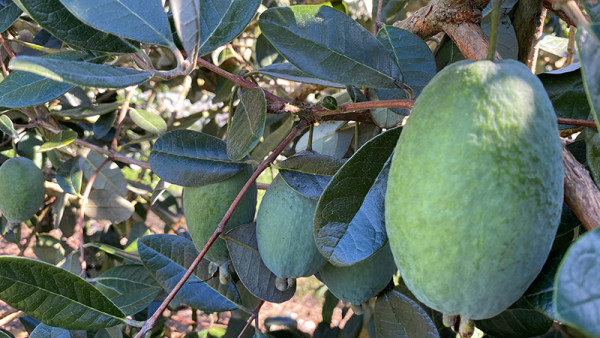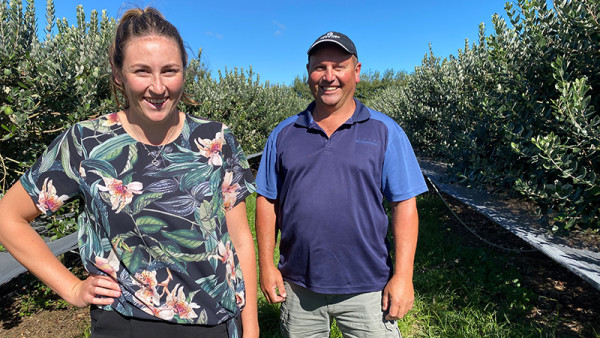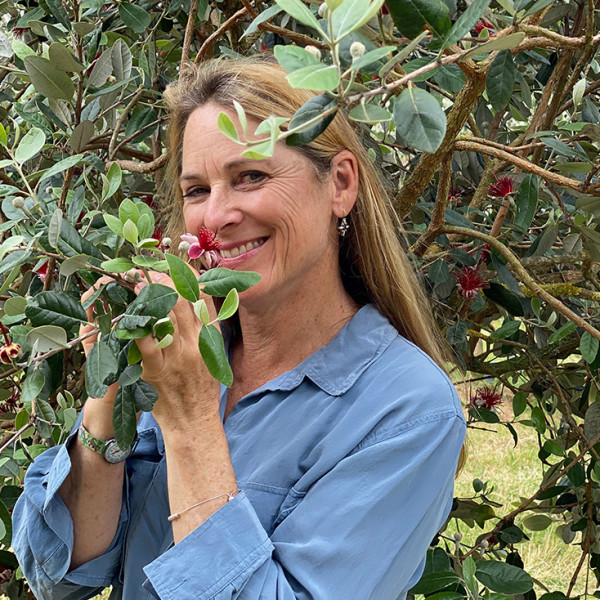High hopes for a Kiwi classic
6 April 2022
Written by Kristine Walsh
First published in the April 2022 issues of The Orchardist.

Gisborne feijoas.
Though some regions are facing challenges from pests and disease, there are hopes that New Zealand's much-loved feijoas will become a big part of the food processing sector. By Kristine Walsh.
A good growing season and strong domestic demand made for optimism in the feijoa sector as the 2022 harvest got underway.
Gisborne's Kaiaponi Farms has been producing feijoas for more than 20 years, both on its own orchards and for a couple of key growers.
Like last year, the 2022 harvest got off to an early start – late February as opposed to early March – which fruit procurement manager David Hansen says is due to some hot days coupled with episodes of well-timed rain making for a good growing season producing nice-sized fruit.
Across the 20 hectares of feijoas it oversees, Kaiaponi expects to see a 2022 harvest of around 400 tonnes, but David says that as different varieties produce fruit of different sizes, it's hard to get that estimate spot-on.
At that level, the company makes a solid contribution to the national crop … in 2019, the NZ Feijoa Growers Association's around 140 members produced about 1200 tonnes of fruit from 240 hectares.
At that time, feijoas generated $4 million in domestic sales and $200,000 in exports. However, in recent years fall-out from the Covid-19 pandemic has impacted on exports, with most of the crop being sold on the domestic market despite an estimated 20 percent increase in volumes in 2020, numbers that were repeated in 2021.
David Hansen loves feijoas – he's even got a few trees planted on his lifestyle block, just out of Gisborne – but admits their distinctive tropical taste can be polarising, which could also explain why so many Kiwis are passionate about them.
As a board member of the New Zealand Feijoa Growers Association (NZFGA), he says he is committed to helping educate the public palate to appreciate feijoas in their best condition.
They are quite a distinct flavour but for many people, their strongest association is having a feijoa off the ground in grandma's garden, one that was over-ripe and totally not at its best,” he says.
“That's why we want them to try feijoas at their optimal maturity that offers that premium flavour and texture.”
To get that fruit off at the right time, the trees – each of which will eventually produce up to 25 kilograms a year – are understrung with nets and the fruit shaken into it.
“Getting the fruit off before they drop naturally means we can target certain levels of maturity,” David says.
“So if you want less ripe fruit that will last longer in the market, you just shake the tree a bit harder then grade the fruit according to maturity.”
The company's domestic sales lead Olivia Abernethy says that, even early in the season, both demand and values were strong, with fruit moving well through the market.
As volumes increased towards the peak at the end of March, she expected more demand from supermarkets – which like to know they are guaranteed good supplies – with consumers benefitting from the resulting lower price points.

Kaiaponi Farms’ domestic sales lead Olivia Abernethy and fruit procurement manager David Hansen at the eight-hectare Hexton Block, which the company manages on behalf of owner Barton Witters.
Kaiaponi Farms’ domestic sales lead Olivia Abernethy and fruit procurement manager David Hansen at the eight-hectare Hexton Block, which the company manages on behalf of owner Barton Witters.
Kaiaponi and its growers produce varieties including Kakariki, Anatoki, Kaiteri, White Goose and Den's Choice, a mix that gives them strong cross-pollination as well as early and late-fruiting trees, which helps smooth out the harvest.
Even so, the season is short – just two or three months – so the NZFGA is actively encouraging research around new cultivars and improved technologies that will produce more robust fruit, and help it get to market in great condition.
And like many others in the industry, David Hansen would like to see more processing opportunities so consumers can enjoy the distinctive taste of feijoas all year round.
As it stands, Kaiaponi sends up to 15 percent of its crop for processing.
“That market has certainly improved over last year or two with products for juices and smoothies, in particular, being a key part of it,” David says.
“But if the industry is to grow it needs to build on the really good stuff we're already seeing happening in that area of packaged products in the food sector.”
Processing facilities could help ramp up production

Feijoa grower and processor Heather Smith would love to see more processing facilities available to smaller growers with multiple products like hers.
Over in Hawke's Bay, grower Heather Smith has gone a step further, producing her own range of processed products from freeze-dried feijoa wedges and powder to purée, jelly, frozen whole-peeled fruit and a hydrosol face and body spritz.
It's been a hit -- the frozen fruit in particular is a regular sell-out -- but Heather has struggled to find processing facilities that can help her cater for the market.
It all started more than 20 years ago when American biologist Heather and her then husband moved to New Zealand and bought a farm at Tukituki, in Central Hawke's Bay.
Falling in love with feijoas at her first taste she did some research, decided they were the next superfood, and set to work planting a mix of nearly 2000 trees with varieties ranging from her favourite, Mammoth, to White and Yellow Goose, Apollo and an experimental block of cuttings.
Today, those trees produce up to 50 tonnes of fruit a year with about 80 percent of that sold fresh to producers of everything from juice and wine to beer and kombucha.
The rest, however, she holds onto to create her ever-growing range of processed goods.
“Coming from America, where consumers are always looking for exciting new flavours, I was interested in processing right from the start,” Heather says.
“So about seven years ago I started experimenting to discover the best ways to use this amazing fruit, and that's how Heather's Feijoas was born.”
With a few offshore outlets already secured Heather has achieved her aim of creating delicious, transportable ways to get feijoas to the market, but says getting those products made has been an uphill battle.
“I am dependent on other processing companies and because I make a range of products, that means I have to use a range of facilities that can't always accommodate me in a timely manner,” she says.
Those barriers are the only thing standing in the way of Heather's Feijoas ramping up production to cater for both domestic and offshore consumers, Heather adds.
“My absolute dream would be to see someone with the will, and the means, set up a factory in Hawke's Bay that could provide all sorts of processing methods for modest runs such as ours, and could also deal with other product lines like berries.
“We know the demand is there, we just don't have the capital to do it. So if an investor with vision could see that need and address it there could be major benefits across the industry.”
